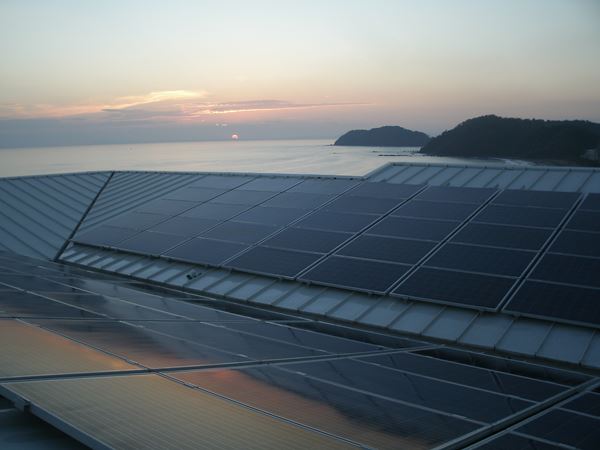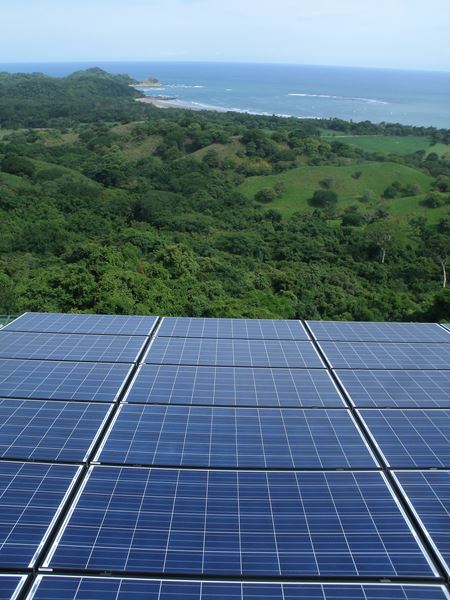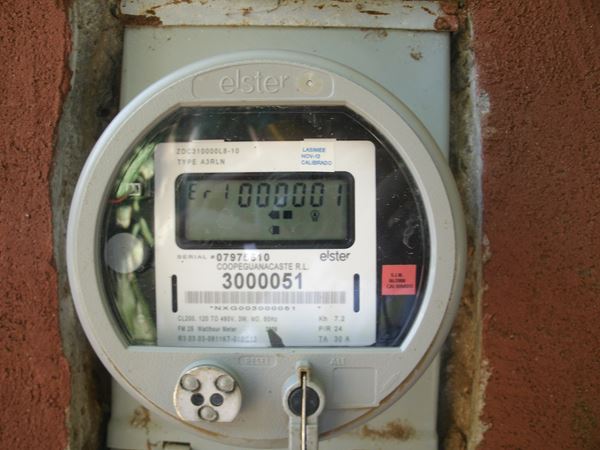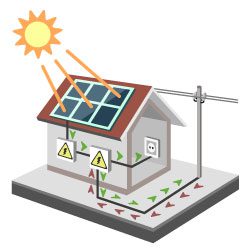
Solar Savings : A Powerful Incentive
Enhanced opportunities for Costa Ricans with solar-equipped homes or commercial properties may be the best news that hasn’t been heard or well understood by everyone standing to benefit.
With national ground rules laid down just over a year ago for the distribution of self-generated electricity, the uptake from motivated home and business owners has been strong. Equipment suppliers such as Pura Vida Energy Systems are encouraged by the growing interest in Costa Rica’s net metering program and number of early adopters they have helped get connected.
“Inquiries for us are up about 400 per cent since the word started slowly getting out,” reports Cham Brownell, Chief Operations Officer.
Yet, Brownell believes inadequate information and misconceptions about net metering – starting with the fact that indeed, it’s available everywhere in the country – may be dissuading eligible home and business owners from learning how they might take advantage.
“Anyone with the appropriate technology and desire to sign on for net metering can do so through any of Costa Rica’s regional utility companies,” he affirms. “That includes Coopeguanacaste, which unfortunately doesn’t seem to be common knowledge.”
In fact, all cooperative electricity providers in Costa Rica are now legally required to offer and implement net metering a consistent, regulated basis. The methodology and fees are spelled out by government decree through enacting legislation in force since April 2016. Previously, net metering was available only to customers of the government-run ICE utility, which began offering it in late 2010.
For Costa Ricans taking the initiative in becoming more energy self-sufficient, the extent to which they remain “grid-tied” while having their own generating capacity is a key consideration. This is where net metering now factors into their decisions about which type of solar power installation best meets efficiency and cost-saving goals.
Net metering necessarily adds an administrative layer to the electricity customer-service provider relationship. How unwelcome or worthwhile depends on a variety of individual give-and-take circumstances and rules that apply. On one hand, grid-tied producers of their own solar energy consume utility company power when needed. On the potentially rewarding upside, they are now also suppliers to the public grid. Essentially, net metering determines what the electricity “balance sheet” for these customers looks like at any given time.
Brownell explains how the back-and-forth transfer of energy and corresponding information translates into dollars and cents on a home owner’s monthly electric bill.
“Simply put, you have an electric meter capable of spinning backwards when the energy produced in your home is greater than the energy consumed there at any given moment. Whether you are producing solar power while the sun is shining or wind power when the wind is blowing, the excess can be “stored” in the form of billing credits. Then these credits are applied to the energy you consume when the sun sets or the wind stops blowing.”
In fact, Brownell points out, “old-fashioned” electricity meters have always had the same reverse capability. But there were bureaucratic obstacles for consumers wanting to connect their own generation unit to the government-run utility distribution system. For those who are so inclined now, net metering marks a profound change in the feasibility of producing their own electricity.
When combined with tariff and sales tax savings that commercial equipment suppliers are able to pass on to their customers, net metering significantly boosts the return-on-investment potential for Costa Ricans contemplating the idea of installing their own solar energy production system. Brownell suggests it’s no stretch to envision such a system paying for itself in less than five years, as opposed to about 25 years without net metering.
Another incentive for acting sooner than later, he adds, is the risk of missing out altogether due to circuit capacity limits. Each energy circuit in Costa Rica has a limit of 15 per cent solar capacity. Once that 15 per cent mark is reached for solar in relation to total energy transmitted on a circuit, no more solar installations are allowed. In fact, this has already happened with some circuits under ICE jurisdiction, Brownell notes. While he sees no reason right now for Coopeguanacaste customers to be concerned about circuit capacity limits, that could change in a couple of years so it’s something to keep in mind.
Distributed Generation
Net metering is the cornerstone of what are commonly known as distributed generation systems, or distributed energy systems. Power is harnessed at or near the place where it is consumed from renewable and readily accessible sources such as the sun or wind. Departures in this direction world-wide reflect a common preoccupation with sustainable energy solutions that are clean, efficient and affordable. Distributed energy historically was associated with monolithic generating stations located close to power sources, such as a waterfall or dam site, but long distances from the populations they supplied. End users were connected through transmission lines branching out thousands of miles in all directions. Nowadays, distributed generation has come to mean something different. Applications are small-scale, decentralized and customized in terms of energy technology and modular configuration. Installations may function on a stand-alone basis, such as in a home or office, or interconnect with power grids serving other locations through the electric utility’s distribution lines.
Net Metering Not Perfect – Yet
However enthusiastic the response to net metering in Costa Rica, nobody is saying it’s a one-size-fits-all solution or a perfect fit for those who do embrace the win-win prospects. As happens with most policy undertakings, greater-good compromises yielded certain rules of a “not-all-created-equal” nature. Fairer revisions in some cases are being advocated. Other rules may not be as objectionable as they seem, but are just plain confusing. Watch for more Howler coverage of this topic in a future issue.



